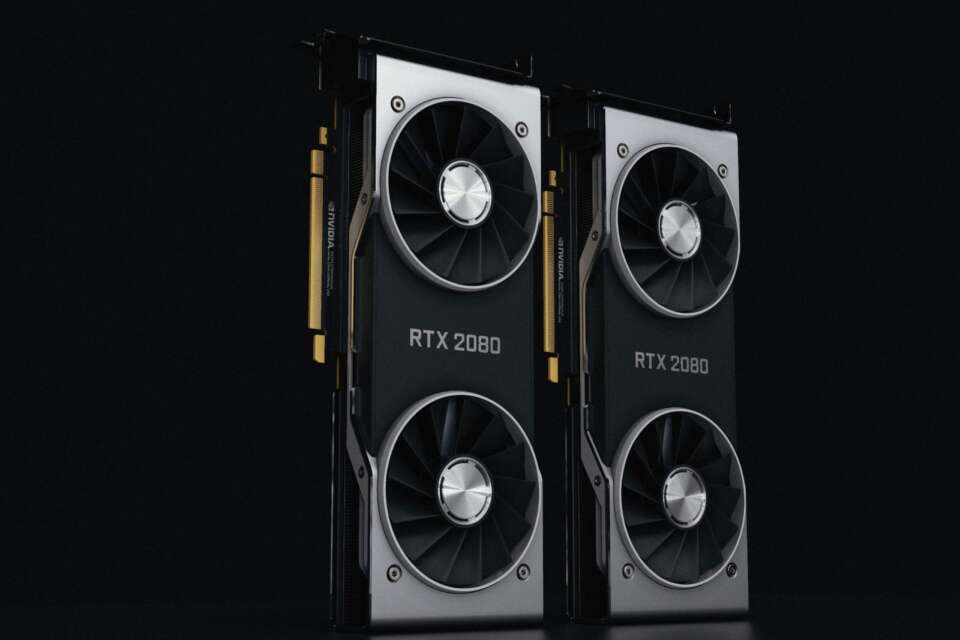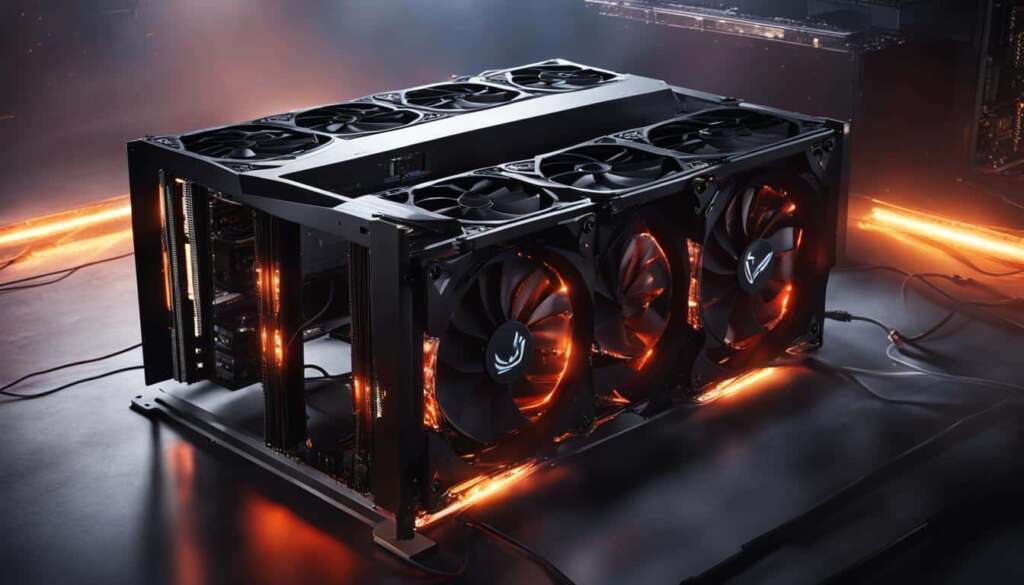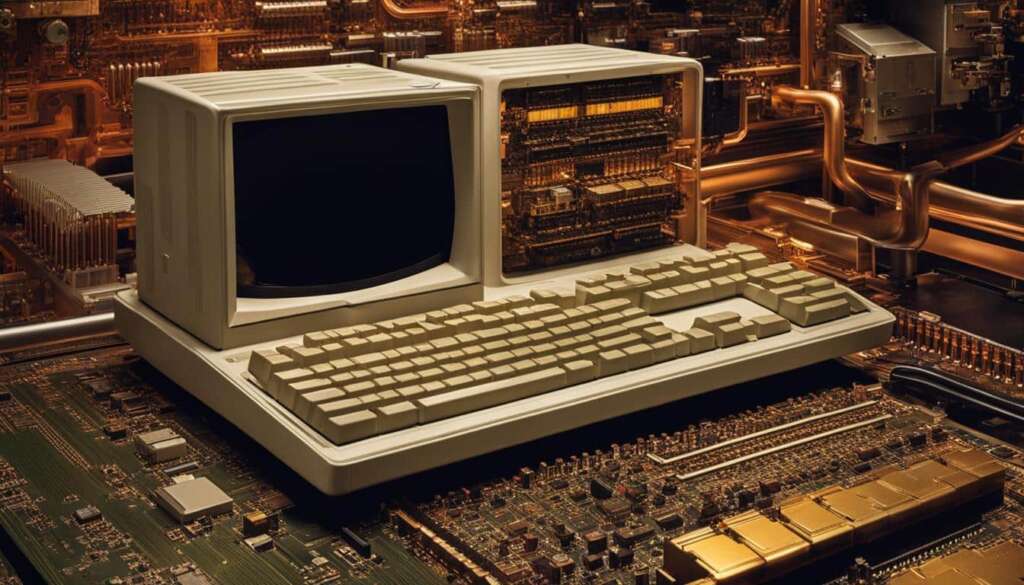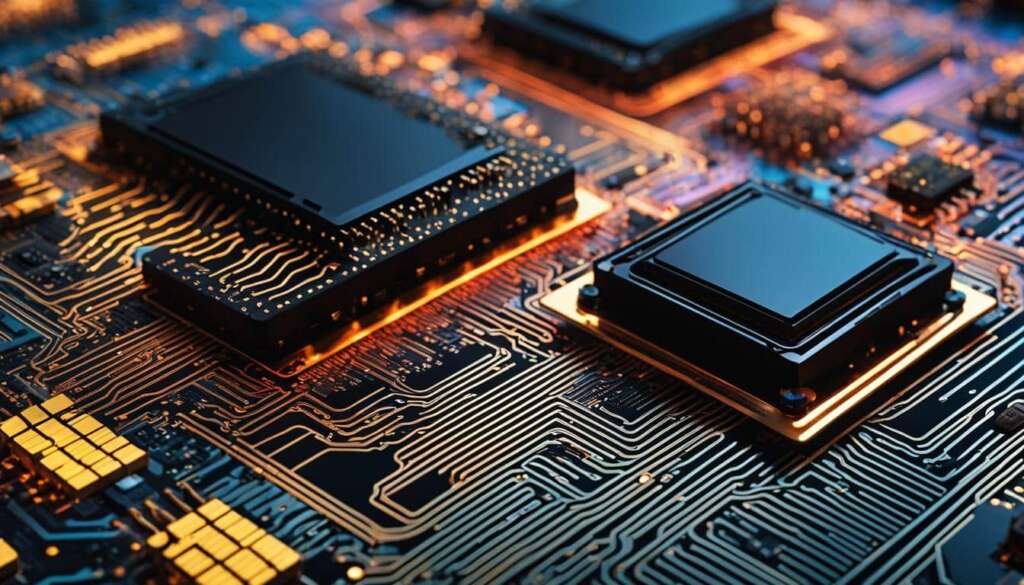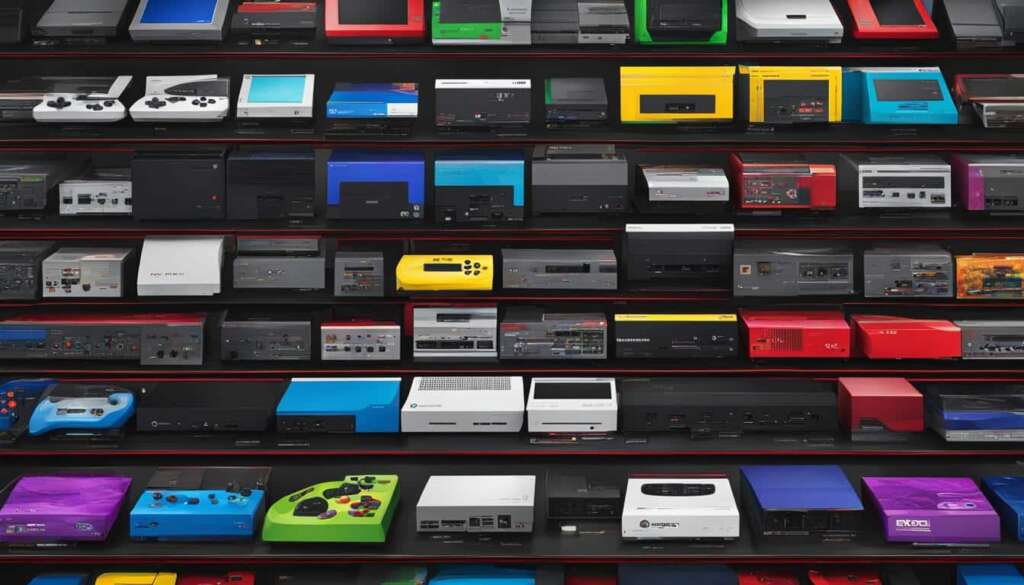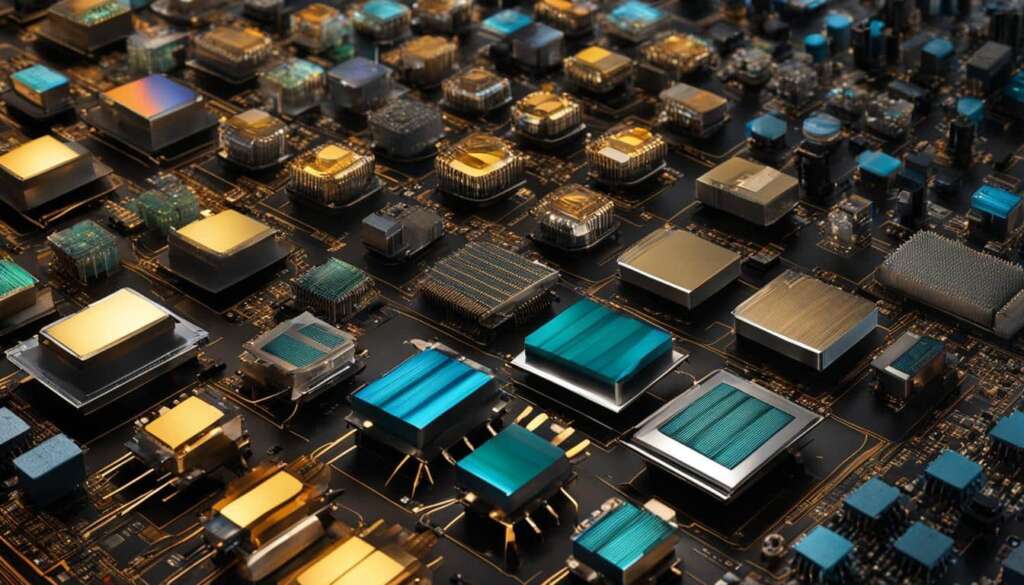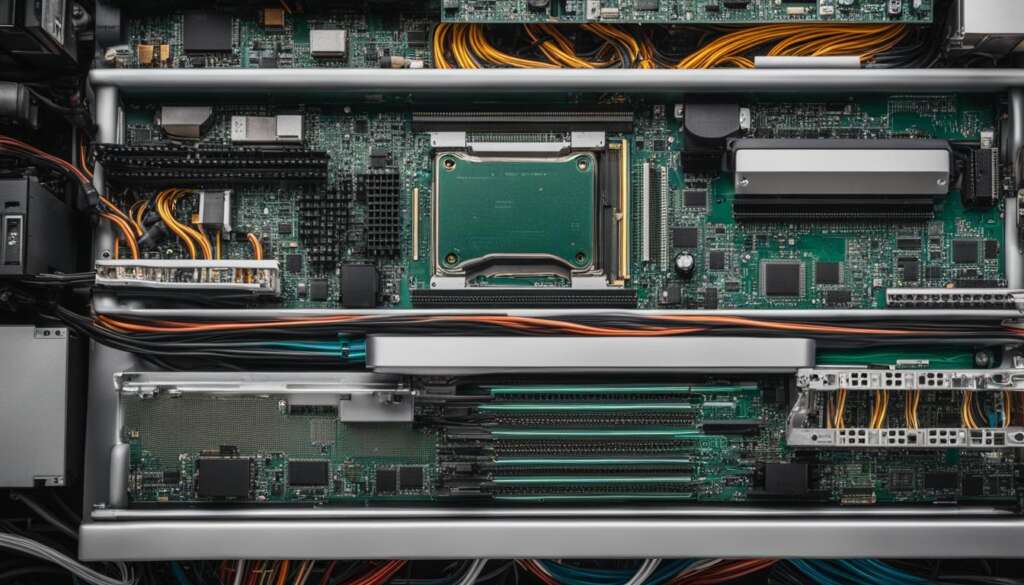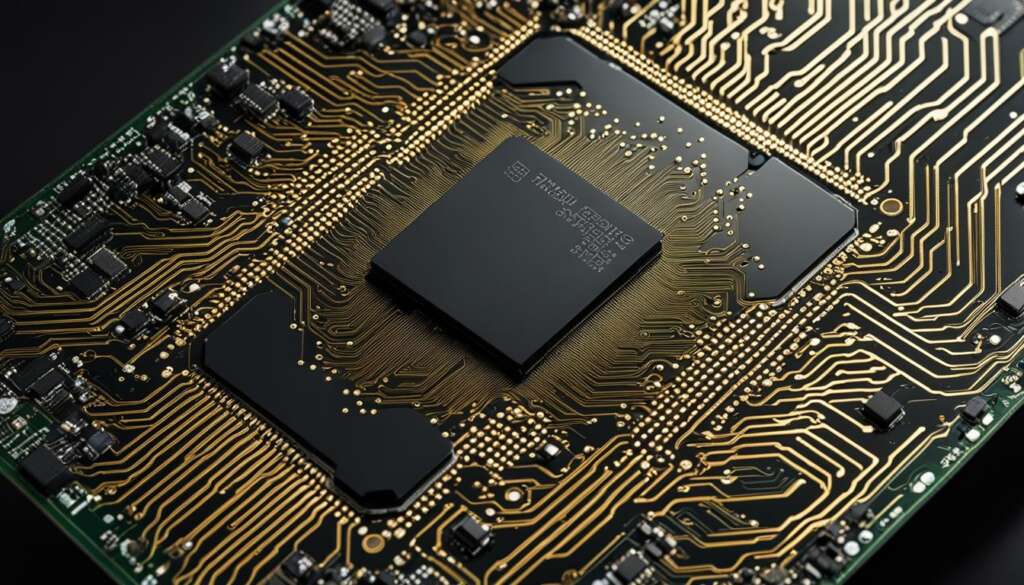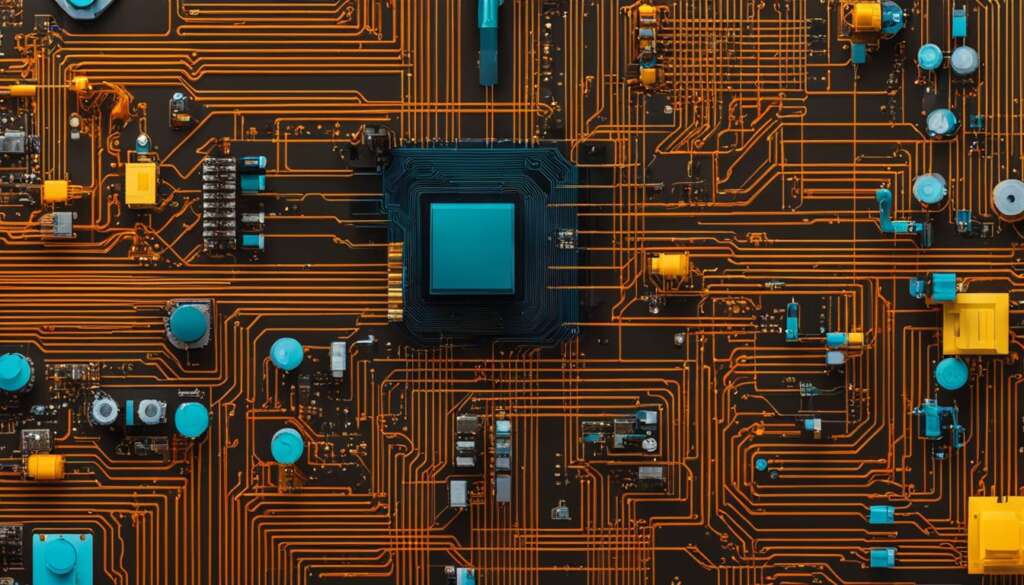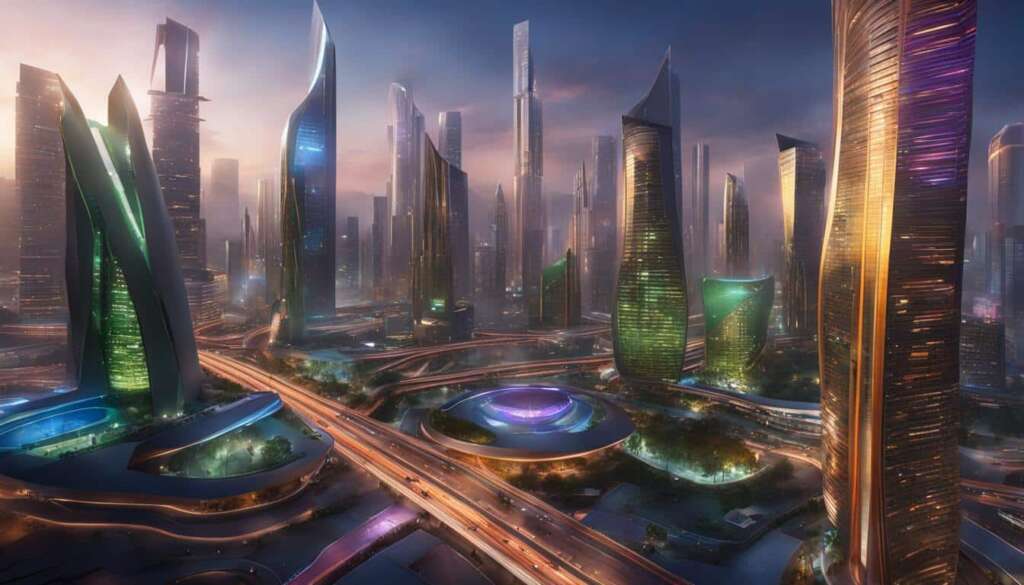Table of Contents
Graphics processing units (GPUs) have undergone a remarkable evolution, transforming from specialized electronic circuits designed solely for computer graphics and image processing to becoming integral components in modern computing devices. Today, GPUs power video cards, mobile phones, personal computers, and game consoles, enabling not only stunning graphics but also handling non-graphical tasks like neural network training and cryptocurrency mining.
Over the years, GPU technology has advanced by leaps and bounds, resulting in remarkable progress and innovation. From their early days in arcade system boards in the 1970s to the introduction of specialized graphics display processors for personal computers in the 1980s, GPUs have established themselves as crucial components in the emerging PC graphics market.
The Early Days of GPU Development
The evolution of graphics processing units (GPUs) can be traced back to the 1970s when arcade system boards started incorporating specialized graphics circuits. These early video game hardware systems utilized graphics chips to composite data for display, marking the beginning of GPU development. In the 1980s, companies such as NEC and Atari introduced the first graphics display processors for personal computers, laying the foundation for the emerging PC graphics market.
The early days of GPU development were characterized by the constant pursuit of evolving performance. As technology advanced, GPUs became more powerful, enabling improved graphics rendering and more immersive gaming experiences. These advancements not only impacted the gaming industry but also paved the way for the integration of GPUs into various computing devices, including mobile phones, personal computers, and game consoles.
One notable milestone in GPU development during this period was the introduction of 2D GUI acceleration and 3D graphics hardware by companies like S3 Graphics and Rendition in the 1990s. These developments sparked a revolution in the gaming industry and brought about significant enhancements in GPU performance. Additionally, the release of Nintendo 64’s Reality Coprocessor in 1996 introduced hardware T&L capabilities to home video game consoles, further driving the evolution of GPUs.
| Year | Milestone |
|---|---|
| 1970s | Arcade system boards incorporate specialized graphics circuits |
| 1980s | NEC and Atari introduce the first graphics display processors for personal computers |
| 1990s | Introduction of 2D GUI acceleration and 3D graphics hardware by companies like S3 Graphics and Rendition |
| 1996 | Release of Nintendo 64’s Reality Coprocessor with hardware T&L capabilities |
The Rise of Powerful GPUs
The 1990s marked a significant turning point in GPU development, with companies like S3 Graphics and Rendition leading the way in introducing groundbreaking advancements. These pioneering manufacturers introduced 2D GUI acceleration and 3D graphics hardware for arcade and computer games, catapulting GPU technology to new heights. But it was the introduction of the Nintendo 64’s Reality Coprocessor in 1996 that truly revolutionized the industry. This innovative hardware brought hardware T&L (transform, clipping, and lighting) capabilities to home video game consoles for the first time, setting the stage for further advancements in GPU development.
In 1997, Mitsubishi released the 3Dpro/2MP, a GPU capable of transformation and lighting. This breakthrough opened doors to more immersive and realistic graphics, allowing developers to create visually stunning games and applications. The powerful combination of GPU technology and transformative features fueled a rapid evolution in the gaming and computer graphics industries.
As GPUs continued to evolve, becoming more powerful and versatile, they found their place beyond the realm of gaming. Today, GPUs are essential components in various fields, including artificial intelligence, machine learning, and scientific research. Their ability to handle massive datasets and perform complex computations has made them indispensable for training AI algorithms and fueling advancements in these rapidly developing fields. The relentless pursuit of GPU innovation has resulted in powerful, energy-efficient GPUs that continue to drive progress and shape the future of computing.
| Year | Development |
|---|---|
| 1970s | Arcade system boards started using specialized graphics circuits for composite data display. |
| 1980s | NEC and Atari introduced the first graphics display processors for personal computers. |
| 1990s | S3 Graphics and Rendition introduced 2D GUI acceleration and 3D graphics hardware for arcade and computer games. |
| 1996 | Introduction of the Nintendo 64’s Reality Coprocessor brought hardware T&L capabilities to home video game consoles. |
| 1997 | Mitsubishi released the 3Dpro/2MP, a GPU capable of transformation and lighting. |
GPUs and the AI Revolution
Graphics Processing Units (GPUs) have undergone remarkable advancements that have propelled them into the forefront of the artificial intelligence (AI) revolution. With their ability to handle massive datasets and perform complex computations, GPUs have become indispensable tools for training AI algorithms and accelerating machine learning (ML) processes.
Today, GPUs are utilized in a wide range of applications, from small embedded systems to large-scale cloud servers. Their parallel processing capabilities and high-performance computing make them ideal for various industries that heavily rely on AI and ML technologies. As a result, the demand for GPUs has skyrocketed, leading to a projected market value of over $130 billion by 2027.
This rapid growth in the GPU market can be attributed to the continuous evolution of GPU technology. GPU manufacturers, such as industry leaders Nvidia and AMD, have been at the forefront of driving innovation in this field. They have been consistently improving GPU performance, enhancing power efficiency, and introducing new features that cater to the ever-evolving needs of AI and ML applications.
“The evolution of GPUs has revolutionized the field of AI and ML, enabling us to tackle complex computational tasks more efficiently. The parallel processing capabilities of GPUs have transformed the way we train AI algorithms and have opened new possibilities for scientific research and data analytics.”
– GPU technology expert
GPU Evolution Trends
Looking ahead, the future of GPU innovation appears promising. GPU manufacturers are expected to continue pushing the boundaries of technology, introducing advancements that further enhance GPU performance and efficiency.
One of the key trends in GPU evolution is the integration of real-time ray tracing and AI-assisted supersampling. These features have revolutionized graphics rendering, delivering unparalleled visual quality and immersion in gaming experiences. As technology progresses, we can expect even more sophisticated rendering techniques that push the boundaries of realism.
Another trend is the increasing emphasis on energy efficiency. With the growing awareness of environmental sustainability, GPU manufacturers are striving to create energy-efficient solutions without compromising performance. This includes optimizing power consumption and exploring new materials and design approaches that minimize energy requirements.
In conclusion, GPUs have transformed from being specialized graphics processors to becoming essential components in the AI and ML revolution. Their parallel processing capabilities, high-performance computing, and continuous innovation have propelled them into the forefront of cutting-edge technologies. As we move forward, the evolution of GPUs will continue to shape the landscape of AI, ML, and other industries that rely on the power of computational processing.
GPU Cloud Servers and Their Role in Parallel Processing
The evolution of GPUs has brought about a significant shift in their usage, from predominantly gaming-focused applications to becoming indispensable tools for parallel processing. GPU cloud servers have emerged as a crucial component in various industries, revolutionizing the way we process data and perform complex computations.
These powerful servers, equipped with highly efficient GPUs, have found their place in embedded systems, autonomous vehicles, mobile phones, and robots. Their ability to handle computationally intensive tasks has made them invaluable in industries such as weather forecasting and stock analysis.
The integration of GPUs in cloud servers has transformed the landscape of parallel processing. By harnessing the power of multiple GPUs, these servers can process vast amounts of data simultaneously, enabling faster and more efficient computations. This parallel processing capability has opened up new possibilities for scientific research, AI applications, and other computationally demanding tasks.
| Industries | Applications |
|---|---|
| Automotive | Self-driving cars, advanced driver assistance systems |
| Healthcare | Medical imaging, drug discovery, genomics |
| Data Centers | Deep learning, data analysis, server virtualization |
In summary, GPU cloud servers have become instrumental in parallel processing, offering the computational power needed to tackle complex tasks across various industries. As GPU technology continues to progress and evolve, we can expect further advancements in parallel processing capabilities, driving innovation and pushing the boundaries of what is possible.
The Shift from Gaming to Parallel Processing
The evolution of GPUs took a significant leap forward in the late 1990s when parallel computer architecture was introduced. This new architecture revolutionized the capabilities of GPUs, making them capable of performing multiple instructions simultaneously.
This breakthrough opened up new possibilities for GPU development and innovation beyond their initial focus on gaming. With the ability to handle computationally intensive tasks, GPUs found applications in scientific research and artificial intelligence (AI). The parallel processing capabilities of GPUs made them ideal for AI algorithms, which require massive computations and processing of large datasets.
The introduction of parallel processing in GPUs marked a turning point in their development. It enabled GPUs to excel in fields beyond entertainment, driving advancements in scientific research, data analysis, and AI applications.
Today, GPUs play a crucial role in various industries, including automotive, healthcare, and finance. They are used in autonomous vehicles for real-time image processing, in medical imaging for faster and more accurate diagnoses, and in financial institutions for complex data analysis. The shift from gaming to parallel processing has transformed GPUs into versatile tools that drive innovation and progress in multiple domains.
| Applications | Benefits |
|---|---|
| Scientific research | Accelerated computations, faster simulations |
| Artificial intelligence | Efficient training of AI algorithms, handling large datasets |
| Autonomous vehicles | Real-time image processing, enhanced safety features |
| Healthcare | Faster and more accurate medical imaging, improved diagnoses |
| Finance | Complex data analysis, faster computations |
GPU Innovation and Progress
The shift from gaming to parallel processing has driven continuous GPU innovation and progress over the years. GPU manufacturers like Nvidia and AMD are constantly pushing the boundaries of technology to deliver more powerful and energy-efficient GPUs. This ongoing competition has resulted in significant advancements in GPU performance, computational capabilities, and graphics rendering.
With each new generation of GPUs, we witness improvements in performance and efficiency, making GPUs increasingly valuable for a wide range of applications. The future of GPU innovation holds the promise of even greater advancements, with technologies like real-time ray tracing and AI-assisted supersampling transforming gaming experiences and pushing the limits of visual realism.
The Growing Importance of GPU Manufacturers
As the demand for GPUs in artificial intelligence (AI) and machine learning (ML) continues to soar, GPU manufacturers have emerged as key players in the computer hardware industry. Companies like Nvidia and AMD are at the forefront of GPU technology advancements, designing custom GPUs optimized for AI and ML workloads.
These manufacturers are constantly pushing the boundaries of GPU performance and efficiency, catering to the evolving needs of various industries. The competition between Nvidia and AMD, in particular, drives innovation and ensures that gamers and professionals alike have access to powerful and energy-efficient GPUs.
With their relentless focus on GPU development and progress, GPU manufacturers have made significant contributions to the field of parallel processing. Their advancements have not only benefited the gaming industry but also revolutionized other sectors such as automotive, healthcare, and data centers. GPUs are now being used in self-driving cars, medical imaging, and deep learning applications, further driving the evolution of GPU technology.
As GPU technology continues to evolve, we can expect even more exciting developments in the future. The growing importance of GPU manufacturers and their dedication to improving GPU performance will play a crucial role in shaping the next era of computing and graphics processing.
| GPU Manufacturer | Key Innovations |
|---|---|
| Nvidia | Introduction of real-time ray tracing and AI-assisted supersampling |
| AMD | Advancements in energy efficiency and performance |
The Future of GPU Innovation
The evolution of graphics processing units (GPUs) has been a remarkable journey, and the future holds even more exciting possibilities. Companies like Nvidia and AMD continue to push the boundaries of GPU technology, introducing new features and improvements that enhance performance, reduce power consumption, and enable immersive gaming experiences. Let’s take a closer look at the future of GPU innovation and the trends that are shaping the evolving GPU performance.
Real-Time Ray Tracing and AI-Assisted Supersampling
One of the most significant advancements in GPU technology is the introduction of real-time ray tracing and AI-assisted supersampling. Real-time ray tracing allows for more realistic lighting and reflections in video games and other graphical applications. By simulating the path of individual light rays, GPUs can create stunning visual effects that were previously only possible with offline rendering. AI-assisted supersampling, on the other hand, uses artificial intelligence algorithms to upscale lower-resolution images to higher resolutions, resulting in smoother and more detailed graphics.
Energy Efficiency and Performance Improvements
As technology continues to advance, GPU manufacturers are constantly striving to improve energy efficiency and performance. The focus is on developing GPUs that can deliver powerful performance while consuming less power, resulting in a more sustainable and eco-friendly computing experience. This not only benefits the environment but also enables longer battery life in mobile devices and reduces electricity costs for data centers. The future of GPU innovation lies in finding the perfect balance between performance and energy efficiency.
Competition Drives Innovation
The competitive landscape between GPU manufacturers drives innovation in this industry. The rivalry between companies like Nvidia and AMD fuels the development of new technologies and features. Each company is constantly seeking to outdo the other, resulting in a continuous cycle of improvements and advancements. This competition benefits consumers, as it ensures that they have access to cutting-edge GPU technology that pushes the boundaries of what is possible in graphics processing and computational power.
| Future Trends | Benefits |
|---|---|
| Increase in GPU parallelism | Improved performance in parallel computing tasks |
| Integration of GPUs in mobile devices | Enhanced graphics capabilities and improved gaming experiences on smartphones and tablets |
| Advancements in AI and machine learning | Accelerated training of AI algorithms and expanded applications in various industries |
| Enhanced support for virtual reality (VR) and augmented reality (AR) | Immersive and realistic VR and AR experiences |
GPUs: More Than Just Gaming
Graphics Processing Units (GPUs) have come a long way since their early days in arcade systems and personal computers. Today, these powerful electronic circuits are not just limited to gaming but have become essential components in various industries. From automotive to healthcare and data centers, GPUs play a vital role in driving innovation and advancing technologies like artificial intelligence (AI) and machine learning (ML).
GPU development and progress have led to their widespread adoption in industries that require fast parallel processing and handling computationally intensive tasks. The versatility of GPUs makes them indispensable for applications such as self-driving cars, medical imaging, and deep learning. As the demand for AI and ML continues to grow, GPUs will continue to evolve and push the boundaries of what is possible.
GPU technology advancements have also resulted in energy-efficient designs, reducing power consumption while improving performance. This has not only benefited the gaming industry but also enabled industries like weather forecasting and stock analysis to perform complex computations more efficiently. The continuous innovation in GPU technology by manufacturers like Nvidia and AMD ensures that the future holds even more exciting possibilities for GPUs beyond gaming.
| Industry | Application |
|---|---|
| Automotive | Self-driving cars |
| Healthcare | Medical imaging |
| Data Centers | AI and ML applications |
Conclusion
The evolution of graphics processing units (GPUs) has been a fascinating journey, witnessing the remarkable transformation of these specialized electronic circuits. From their humble beginnings as graphics cards in arcade systems, GPUs have become the heart of AI and ML applications, revolutionizing the way we compute and process graphics.
Over the years, GPUs have undergone significant advancements in performance and functionality, enabling them to handle complex computations with ease. This evolution has propelled them to the forefront of various industries, where they play a vital role in driving innovation.
Today, GPUs are more than just gaming devices. They have found their way into automotive applications, healthcare systems, and data centers, powering self-driving cars, aiding in medical imaging, and fueling deep learning applications.
As we look towards the future, the role of GPUs will only continue to expand. Their evolution will shape the next era of computing and graphics processing, bringing forth new possibilities and advancements that will impact industries across the board. The evolution of graphics cards is an ongoing journey, constantly pushing the boundaries of what is possible and propelling us into a future where the power of GPUs drives innovation and transforms the world as we know it.
FAQ
What is a graphics processing unit (GPU)?
A GPU is a specialized electronic circuit designed for computer graphics and image processing.
How have GPUs evolved over the years?
GPUs have become essential components in modern computing devices, including video cards, mobile phones, personal computers, and game consoles.
When did the development of GPUs begin?
The development of GPUs can be traced back to the 1970s when specialized graphics circuits were used in arcade system boards.
What advancements in GPUs took place in the 1990s?
In the 1990s, advancements in GPUs included 2D GUI acceleration, 3D graphics hardware, and hardware T&L (transform, clipping, and lighting) for home video game consoles.
How are GPUs used in artificial intelligence (AI) and machine learning (ML) applications?
GPUs are essential for training AI algorithms due to their ability to handle massive datasets and perform complex computations.
What industries rely on GPU cloud servers?
GPU cloud servers are used in industries such as embedded systems, autonomous vehicles, mobile phones, weather forecasting, and stock analysis.
How did the introduction of parallel computer architecture impact GPU development?
Parallel computer architecture made GPUs capable of performing multiple instructions simultaneously, leading to their adoption in scientific research and AI applications.
Which GPU manufacturers are leading the industry?
Companies like Nvidia and AMD are designing custom GPUs optimized for AI and ML workloads, driving innovation in GPU technology.
What can we expect from the future of GPU innovation?
The future holds exciting possibilities such as real-time ray tracing and AI-assisted supersampling, which improve graphics rendering and gaming experiences.
Aside from gaming, in what other fields are GPUs utilized?
GPUs are used in industries such as automotive, healthcare, data centers, self-driving cars, medical imaging, and deep learning applications.

